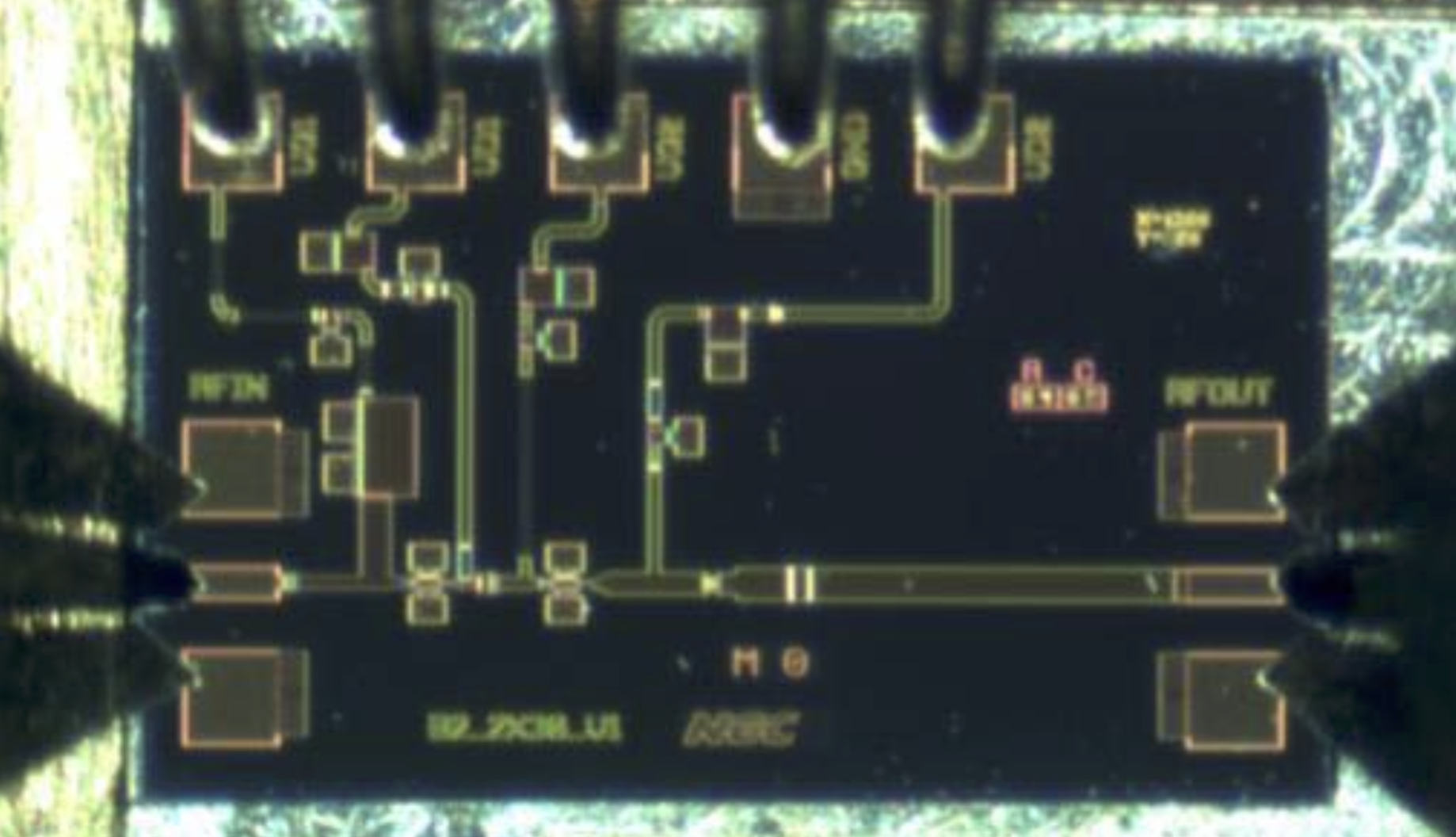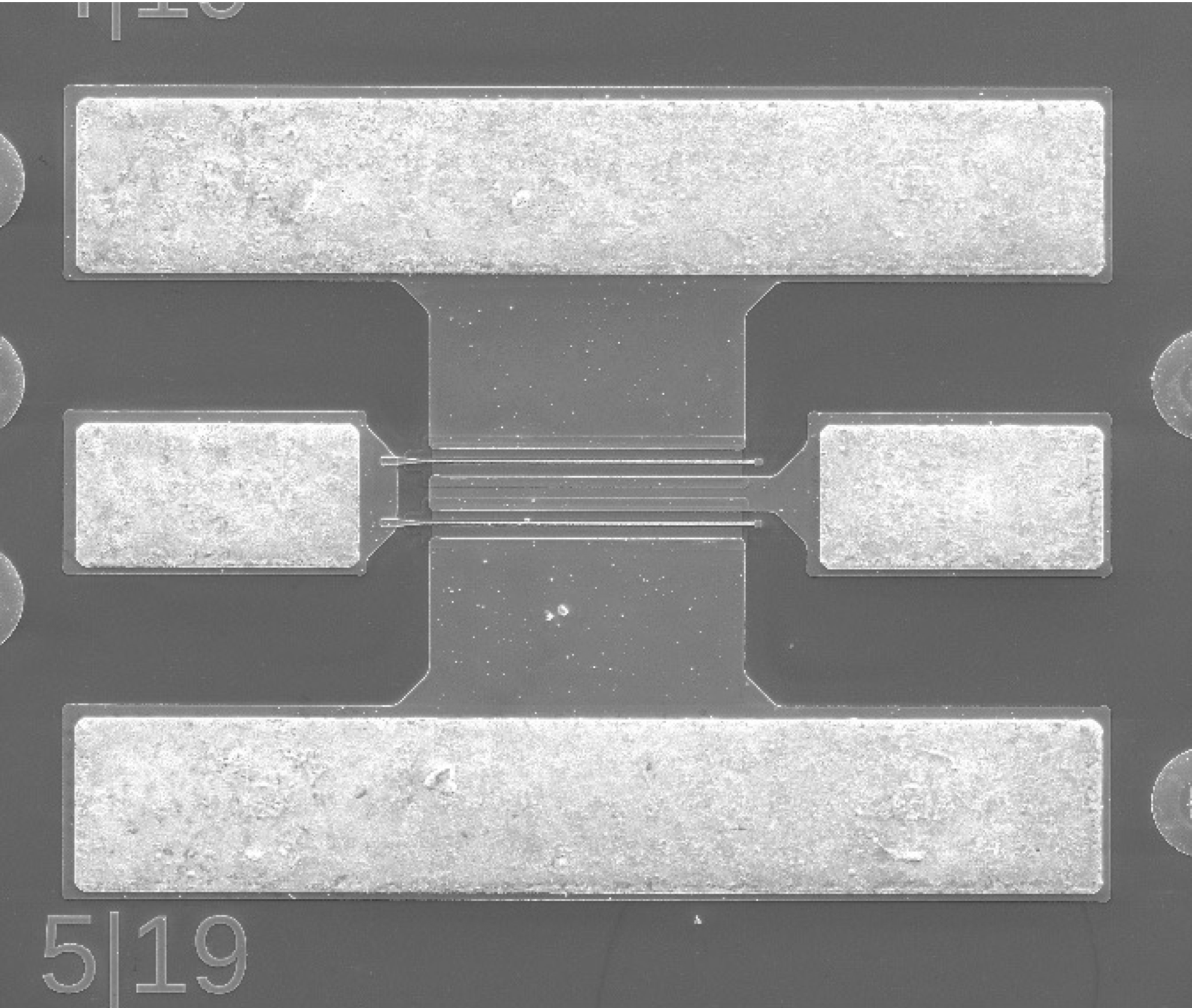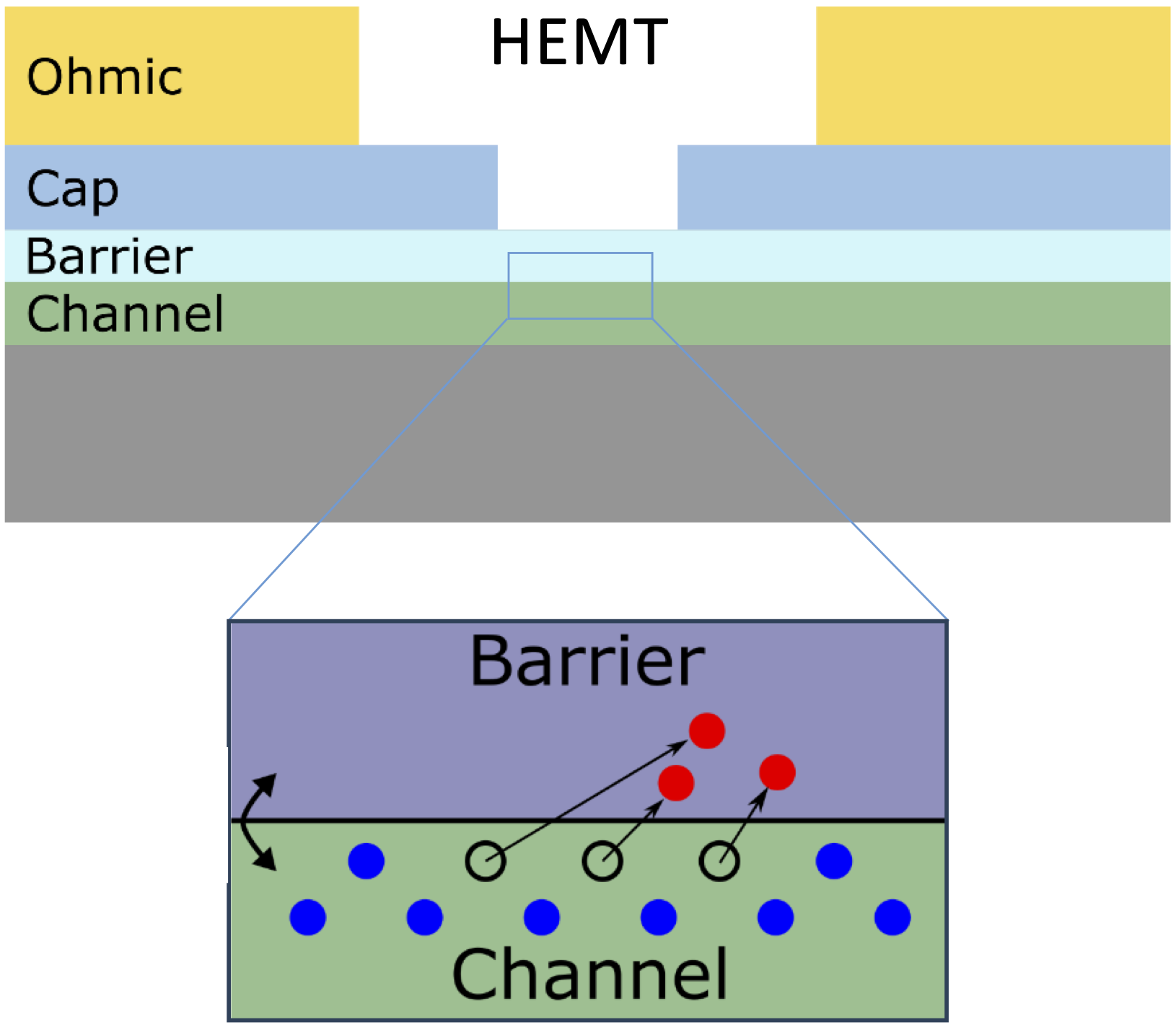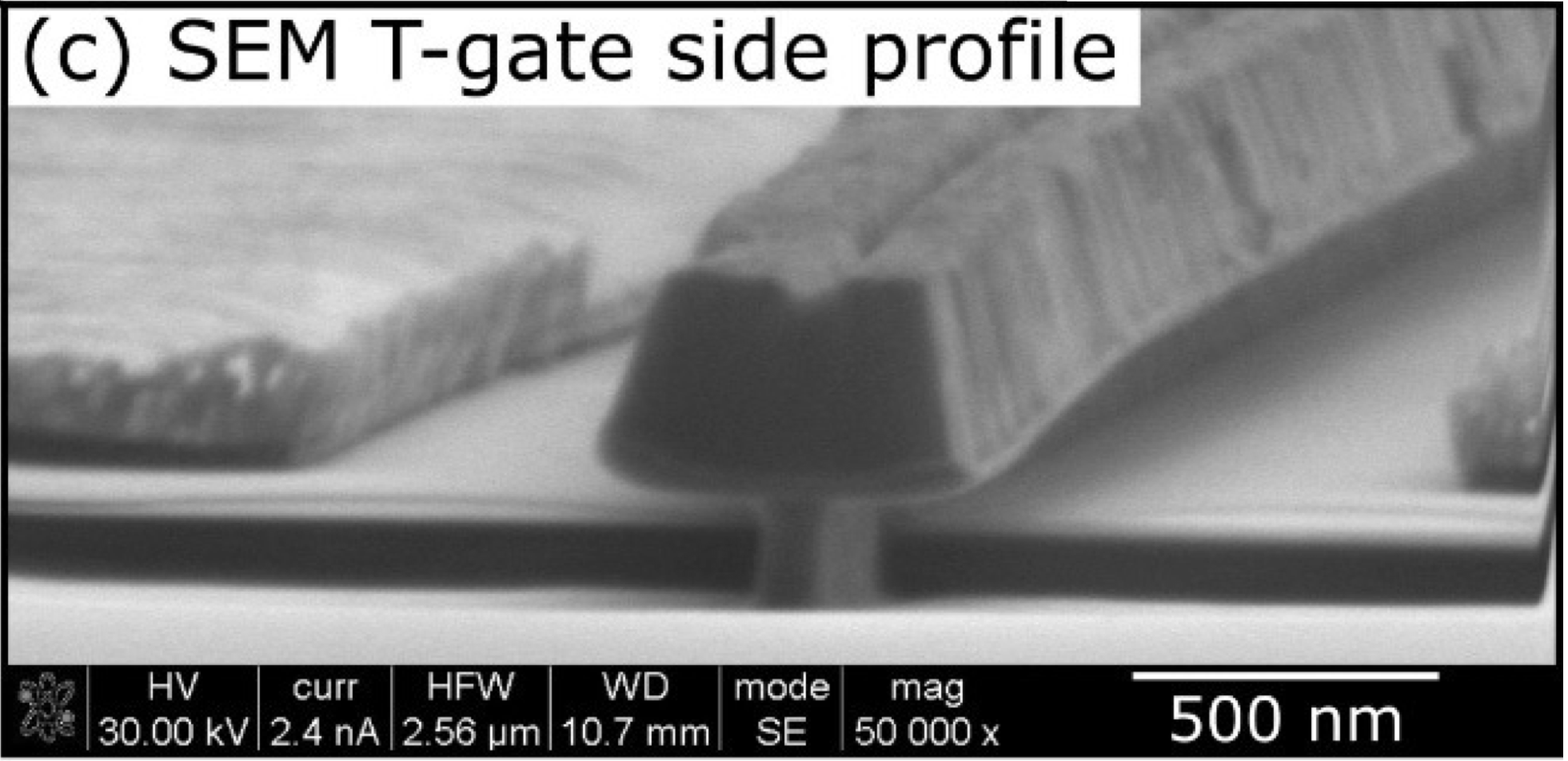Creating the Next Generation of Detectors
Low-noise amplifiers (LNAs) based on field-effect transistors play a critical role in an extremely broad range of applications — wherever weak electrical signals are measured at MHz to GHz frequencies, for example in radio astronomy, radar, planetary and Earth science, chemical sensing and quantum computing. Amplifiers based on HEMTs (high electron mobility transistors) provide the best noise performance at frequencies up to around 100 GHz. At the CRAL, we aim to improve HEMT performance by collaborating with applied physicists to understand the fundamental device-physics factors influencing performance, using this knowledge to engineer improved devices and working with industry and national labs.
Working with industry and NASA
When Northrop Grumman Corp. (NGC) implemented a new 35 nm gate node, the CRAL worked with JPL and NGC to produce new HEMT LNAs for radio astronomy, setting new world records for noise performance. At the CRAL, our focus was on frequencies up to 115 GHz. This work led to new designs for ALMA Band 2 (in collaboration with NRAO) and ALMA Band 2+3 (in collaboration with the University of Manchester), as well as other frequency bands.
Pekka Kangaslahti, Kieran Cleary, et al. , Sub-20-K noise temperature LNA for 67–90 GHz frequency band, in Proceedings of the 2017 IEEE MTT-S International Microwave Symposium (IMS), pp. 1965–1968, 2017. doi:10.1109/MWSYM.2017.8059049
David Cuadrado-Calle, Danielle George, Gary A. Fuller, Kieran Cleary, et al., Broadband MMIC LNAs for ALMA Band 2+3 With Noise Temperature Below 28 K, IEEE Transactions on Microwave Theory and Techniques, vol. 65, no. 5, pp. 1589–1597, May 2017. doi:10.1109/TMTT.2016.2639018
Investigating fundamental limits
Despite these successes, the best devices were still 4-5 times the theoretical minimum (the quantum limit). In order to make further progress, we would need to understand the fundamental device-physics factors preventing these LNAs from reaching their theoretical performance limit. To address this question, we have formed a cross-disciplinary collaboration between the CRAL and Applied Physics at Caltech. The program has made fundamental breakthroughs in understanding the origin of drain noise in HEMT LNAs.
Bekari Gabritchidze, Justin H. Chen, Kieran A. Cleary et al., Experimental Investigation of Drain Noise in High Electron Mobility Transistors: Thermal and Hot Electron Noise, IEEE Transactions on Electron Devices, vol. 71, no. 10, pp. 5925–5932, October 2024. doi:10.1109/TED.2024.3445889
Anthony J. Ardizzi, Alexander Y. Choi, Bekari Gabritchidze, Jacob Kooi, Kieran A. Cleary et al., Self-heating of cryogenic high electron-mobility transistor amplifiers and the limits of microwave noise performance, Journal of Applied Physics, vol. 132, no. 8, article 084501, August 2022. doi:10.1063/5.0103156Building better HEMTS
We aim to engineer improved devices at Caltech by pursuing two main approaches. i) By leveraging the advances we have made in understanding the origin of noise in HEMTs, we aim to engineer devices with improved noise performance. ii) By applying advanced fabrication techniques to HEMTs, we aim to improve our ability to scale HEMTs to smaller gate lengths, thereby improving both noise and gain stability. These improvements will benefit applications from radio astronomy, to Earth and planetary sciences, quantum computing and millimeter-wave imaging.
Mete M. Bayrak, Anthony J. Ardizzi, Sadhvikas Addamane, Kieran Cleary, and Austin J. Minnich, Atomic layer etching of InGaAs using sequential exposures of atomic hydrogen and oxygen gas, arXiv preprint, arXiv:2506.19749 [cond-mat.mtrl-sci], June 2025. doi:10.48550/arXiv.2506.19749
Prototype ALMA Amplifiers

ALMA Band 2+3 prototype MMIC LNA being cryogenically probed at CRAL (Cuadrado-Calle et al. 2017)
Caltech HEMT

SEM image of a discrete HEMT device fabricated at Caltech
Real Space Transfer

Transfer of carriers from channel to the buffer, resulting in partition noise.
T-gate finger of Caltech HEMT

SEM image showing T-gate structure of 100nm gate InP HEMTs fabricated at Caltech
